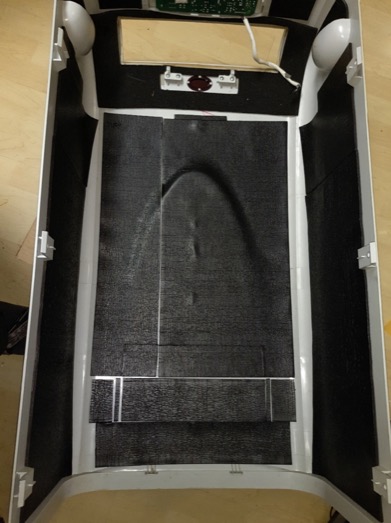How to make a portable air conditioners quiet
Almost all portable air conditioners contain a relatively lightweight cover made from aluminium or plastic. This allows the device to be light and mobile. The disadvantage of a lightweight cover is that the compressor is clearly audible, producing an annoying humming sound that can disturb your night's sleep. When the aircon stands on a lightweight wooden floor, its resonance can cause sound problems. This can be particularly annoying for downstairs neighbours.
On this tips page, you will read how in three steps you can significantly reduce the humming sound of your portable air conditioner. But before getting started, it may be wise to consider the following points of attention. Check the temperature of the unit's cover after having run at full power for about half an hour. If it can still be touched with bare hands without pain, you can proceed following the steps from this plan. Check whether the device is sealed as well, after all you need to open the device in order to be able to apply the insulation material. However, keep in mind that breaking the seal might cancel your waranty.
Step-by-step plan insulation portable air conditioners
-
Step 1: Preparing the cover
Carefully remove the cover and check how the control elements are connected to the electronics of the device, in most cases by means of a cable or plug. Once the cover is detached from the rest of the air conditioner you need to thoroughly clean it. -
Step 2: Fitting and measuring
In order to create well-fitting Vibraflex Extreme parts, you can either make use of templates or measure the inside of the cover and draw it on the Vibraflex material. Mainly measure the flat parts of the cover. The material should be in full contact with the cover. In round corners, or unequal parts, this isn't always the case, rendering the application of material virtually pointless (see picture). -
Step 3: Anti-drumming
The easiest way to cut Vibraflex to size is by means of a sharp knife, preferably at a relatively low temperature, since the material is harder in this condition. After the parts have been cut to size, you should warm up the material till about 30 degrees. Now, the material will be more flexible and it can be applied like a sticker, prevent air bubbles from being encapsulated. Remove the foil at one of the edges and attach this side to the cover. As you remove the rest of the foil with one hand, firmly press the mat with the other. -
Step 4 (optional): Applying sound insulation
More often than not, this step isn't required, but it may reduce the whooshing sound of a ventilator by means of absorption. If there is enough space inside the cover, you can apply sound absorption material on top of Vibraflex. To this end, you can make use of Acousticcell with a thickness of 13 mm.
End result with Vibraflex
We received the picture shown here and the following reaction from a customer:
"Using approximately 6 mats of Vibraflex Extreme the compressor from my portable air conditioner became inaudible. Even when I lay my ear against the door to the room that previously strongly resonated, I don't hear anything like the original humming. The material is tough, yet soft at the same time and perfectly follows the curves of the plastic cover. It is also easy to make holes in the material for the projections."

Vibraflex used to soundproof the housing of a portable aircon
Soundproofing impact noise and vibrations
Most portable and mobile air conditioners stand on wheels from hard material and transmit vibration to the floor. This can be particularly annoying to the downstairs neighbours in case of a wooden floor. But also in your own home the device may cause an audible humming sound, impact noise. By creating a 'floating' platform" underneath the device using Regufoam Damper Pads, you decouple the unit from the floor.
Such a platform can be made using a thick wooden panel that, for stability, should measure an extra 100 mm (approximately) around the air conditioner. Next, mount standing laths at the short sides of this plate, preventing the air conditioner from dropping off. Equip the bottom of the platform with the Regufoam Pads. Distribute the blocks in such a way that when you stand on it, the platform feels stable, but is pressed in. One of the heaviest portable air conditioners weighs about 34 kg. So with a person that is twice as heavy, the platform is allowed to rebound quite a bit.
Questions? 
Do you have any questions concerning this topic? Please feel free to contact us, we are happy to answer your questions as soon as possible.

 Sound Insulation
Sound Insulation  Soundproofing
Soundproofing  Vibration Isolation
Vibration Isolation  Silent Ventilation
Silent Ventilation  Accessories
Accessories  Thermal & Acoustic Insulation
Thermal & Acoustic Insulation